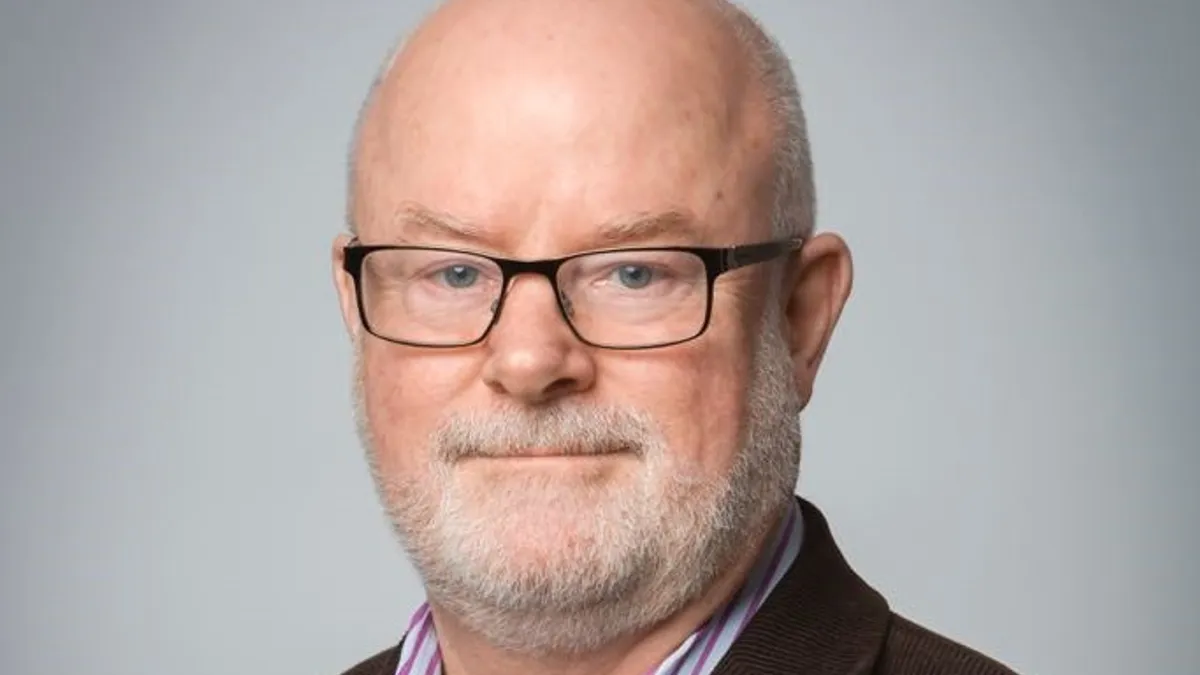Turning 50 does different things to people. Some people buy sports cars. Others start thinking about all the vacations they didn’t take or all the novels they never wrote.
Jim Cassidy decided to join the pharma industry.
As a career academic physician and scientist in Scotland, Cassidy had spent his career caring for oncology patients. By the time he turned 50 he was professor of oncology, head of the Department of Cancer Research, and head of the Division of Cancer Sciences and Molecular Pathology at the University of Glasgow in Scotland. He'd already run two different cancer centers, including one in Glasgow that he helped build over the course of a decade into a large center with an associated research establishment populated with world-class scientists.
"It was all part of the game plan," says Cassidy, now chief medical officer for SpringWorks Therapeutics. But after 10 years at the job in Glasgow, he decided to "take stock" and ask himself a simple question: "Does this continue to be the thing that I get the most joy out of?"
He found that the answer was, “No.” He'd become more of an administrator when what he really wanted was to be further involved with the science.
"I was thinking about what I [was] going to do for the next 20 years. Would I get bored?" he says. "And I came to the conclusion that yes, I would get bored. And it was time to find a new challenge, which was the pharma industry."
At the age of 50, Cassidy realized he'd fulfilled his academic ambitions. But there was plenty left to do.
"I've been driven by ambition since I was 12 years of age," he says. "I'm not going to tell you how old I am now, but it's considerably older than 12."
As a kid, a career advisor discouraged him from going to medical school because he didn’t think Cassidy was up for the challenge. "Ambition and pigheadedness" drove Cassidy to prove him wrong. Decades later, the pharma industry — and a move to the U.S. — became Cassidy's next new challenge.
Settling into the industry
At first, he worried about losing direct patient contact, but soon saw the bigger picture.
"You transfer your clinical desires from a single patient sitting in front of you to a whole bunch of patients who are participants in your trials and who might benefit from the treatments that you're trying to develop," he says. "Although it's not singular, it still has the same kind of feeling to it."
Cassidy spent more than a decade working in oncology at big pharma companies, including in vice president roles at Regeneron, Celgene and Bristol Myers Squibb, and in leadership roles at Roche.
"I consider myself having done my apprenticeship in pharma over 10 years. I learned a huge amount from each of my different jobs and employers," he says. "It's almost like being a new resident. You know almost nothing, and you have to be humble enough to ask the right questions and absorb those learnings.
"Everything can be done faster in a small company. It takes maybe five or six of us to get together in a room, make a decision and then it happens the next day."

Jim Cassidy
Chief medical officer
Now, he's been in the chief medical officer role for almost a year at SpringWorks, which focuses on rare tumors, hematological cancers and biomarker-defined metastatic solid tumors. Its lead program, nirogacestat, is an oral, small-molecule gamma secretase inhibitor in phase 3 development for adult patients with desmoid tumors.
It's also developing mirdametinib, an MEK inhibitor for patients with neurofibromatosis type 1 associated plexiform neurofibromas (NF1-PN), a rare genetic disorder.
“Patients with NF1 have a 30 to 50% lifetime risk of developing plexiform neurofibromas (PN), which are peripheral nerve sheath tumors that often result in severe pain, compression of critical organs, impaired physical function, severe disfigurement and decreased quality of life,” the company says, noting that PN can transform into peripheral nerve sheath tumors that could potentially shorten life span.
In addition, the company is working with partners like GlaxoSmithKline (now GSK), Pfizer and St. Jude Children’s Research Hospital on other therapies in the pipeline.
And it was ambition — both his own and the company's — that drew him to SpringWorks in the first place.
"I was instantly drawn by the ambition that was displayed by the company and the senior officers of the company, which fitted completely with what I want to achieve with remaining parts of my career," he says. "The company has ambition to do great things. And it would be nice to be part of that."
Take mirdametinib for instance, which is currently in a phase 2b clinical trial to evaluate its safety, effectiveness and tolerability in children 2 years or older and adults with an inoperable NF1-PN. Right now, the study is fully enrolled with over 50 adults and 50 children participating.
"We believe that mirdametinib has the potential to be the best-in-class treatment due to the anticipated availability of our pediatric formulation and a dosing schedule that doesn’t require fasting," Cassidy says. "You can imagine meaningful amounts of fasting in children for multiple hours each day is very inconvenient and very difficult to achieve, particularly because these children require long-term treatment to keep their disease under control."
Hitting big goals with a smaller company
Working for a company like SpringWorks has stoked his ambition even further.
"Now I can really get stuck in and get into a smaller company where I can achieve more, perhaps," he says.
As chief medical officer, he oversees the medical affairs group, the physicians that do clinical development and the pharmacovigilance group.
"On top of that, I take part in a lot of the strategic thinking around the company and planning for what we're going to do in the future … essentially everything that I'm either asked to do or I feel I can help with," he says.
And Cassidy has been amazed and impressed by the speed with which a smaller company can work. Gone are the 50-person meetings and layers of committees needed to get things done or steer the ship at a big pharma company.
"Everything can be done faster in a small company. It takes maybe five or six of us to get together in a room, make a decision and then it happens the next day," he says.
Throughout his career he's been involved with blockbuster drugs, "big things that have changed people's lives."
"My personal ambition is to do a bit more of that, and it would be lovely to see another two or three approvals of things that went on to help large numbers of patients or particular types of patients," he says.
Of course, whether that happens all depends on data. But a bit of ambition wouldn’t hurt, either.

















